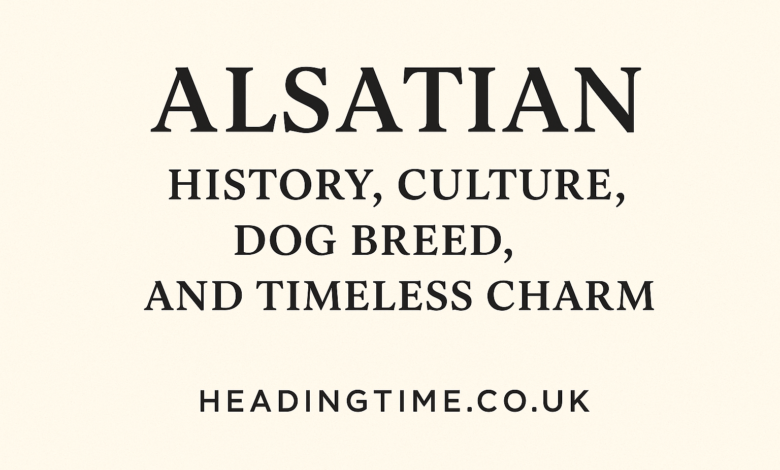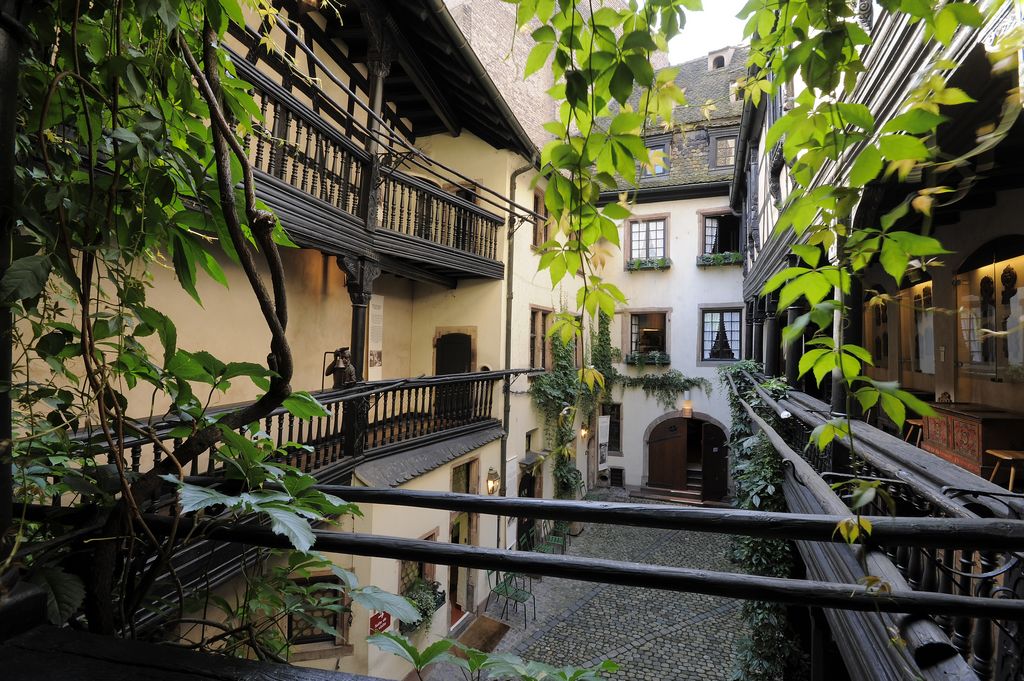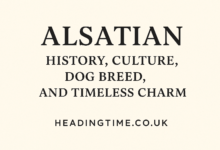Alsatian: History, Culture, Dog Breed, and Timeless Charm

Explore the world of the Alsatian, from its roots in European culture to the loyal dog breed admired worldwide. Learn history, traits, lifestyle, and why Alsatian remains a symbol of strength and heritage.
Introduction to Alsatian
When people hear the word Alsatian, they often picture a loyal, intelligent dog standing proudly with alert eyes and a protective stance. Others think of the Alsace region of France, known for its unique blend of French and German heritage, breathtaking vineyards, and hearty cuisine. Both are true, because the word “Alsatian” carries different but equally rich meanings depending on context.
The term Alsatian first became popular in Britain when the German Shepherd dog was renamed after World War, as political tensions made the word “German” less appealing. Over time, the name stuck, and even today many people still refer to the German Shepherd as an Alsatian. Beyond the canine connection, the word also ties back to the Alsace region itself, an area that has contributed greatly to European culture, architecture, and food.
In this article, we’ll explore the many layers of “Alsatian” — the breed, the region, the traditions, and the legacy. Whether you’re fascinated by history, culture, or dogs, this journey will show you why the Alsatian continues to capture imagination across the world.
The Alsatian Dog Breed
The Alsatian dog, more widely recognized as the German Shepherd, is one of the most admired and versatile breeds in the world. Known for intelligence, strength, and loyalty, the Alsatian has been a trusted companion for families, farmers, and even militaries.
From guarding homes to guiding the visually impaired, the Alsatian proves its adaptability daily. Its temperament balances courage with gentleness, making it just as reliable with children as it is in high-pressure police or rescue work. Unlike some breeds that are bred primarily for looks, the Alsatian’s defining feature is its versatility and work ethic.
Physically, the Alsatian stands out with its muscular build, erect ears, and bushy tail. Its coat ranges from sable to black and tan, though variations exist. The dog’s gaze is perhaps its most striking trait — alert, confident, and intelligent, it reflects both strength and warmth.
Alsatian Temperament and Personality
One of the main reasons the Alsatian remains such a beloved breed is its personality. This dog is not only brave but also deeply loyal to its family. Unlike breeds that are more independent, the Alsatian thrives on companionship and bonding.
They are known for being protective but not aggressive by nature. Properly trained and socialized, an Alsatian is calm around strangers while remaining vigilant. This balance makes them excellent guard dogs and equally trustworthy family pets.
What makes the Alsatian particularly unique is its ability to adapt its behavior to the environment. In the home, they are playful and affectionate, while in training or work settings, they display focus and discipline. This dual personality is one of the reasons the Alsatian excels in so many different roles.
Training an Alsatian
Training an Alsatian is both rewarding and essential. Due to its intelligence, this breed learns commands quickly, but it also needs consistent leadership. Without proper training, an Alsatian can become bored, which may lead to destructive behavior.
Positive reinforcement works best with this breed. They respond strongly to praise, treats, and engaging challenges. Many Alsatian owners note that their dogs seem to enjoy learning, as if training is not just obedience but a form of bonding.
Early socialization is key for an Alsatian puppy. Exposing them to different people, environments, and situations ensures they grow up confident rather than overly cautious. With the right foundation, an Alsatian becomes a well-balanced dog, capable of adapting to nearly any situation.
The Alsatian in History
The Alsatian is more than a modern breed — it’s a dog with a remarkable past. Developed in late nineteenth-century Germany, the German Shepherd was bred for intelligence, strength, and herding ability. However, after the First World War, the British sought to distance the breed from its German origin. Thus, the name “Alsatian” was adopted, referencing Alsace, the region on the French-German border.
This renaming allowed the breed to retain popularity without political associations. Soldiers returning from the war brought stories of brave and intelligent Alsatian dogs that had served alongside them, cementing the breed’s reputation. Over time, the name German Shepherd regained international usage, but in the United Kingdom, the word “Alsatian” still lingers fondly.
The historical connection shows how deeply politics and culture can shape even the way we think about animals. The Alsatian is not just a dog; it’s a symbol of loyalty in times of conflict, and a reminder of how heritage and identity are intertwined.
The Alsace Connection

To understand the term fully, we must look at Alsace itself. Nestled between France and Germany, Alsace is a region known for its mixed cultural heritage. The architecture reflects both French elegance and German sturdiness, with charming timber-framed houses that look like they belong in a fairytale.
Alsace has switched hands between France and Germany multiple times in history, creating a blended identity. This dual heritage is reflected in its language, traditions, and even in its food. From sauerkraut dishes to fine wines, Alsace has carved out a culinary reputation that blends the best of both worlds.
The region is not just about history and food, though. Alsace is home to picturesque vineyards, rolling hills, and the famous Alsace Wine Route. Visitors often describe it as stepping into another era, where old-world charm meets vibrant modern life.
Table: Alsatian Dog vs Alsace Region
| Aspect | Alsatian Dog | Alsace Region |
|---|---|---|
| Origin | Germany, renamed in Britain | Border region of France and Germany |
| Known For | Loyalty, intelligence, versatility | Wine, cuisine, mixed heritage |
| Symbolism | Strength, protection, companionship | Cultural fusion, resilience, tradition |
| Modern Relevance | Popular working and family dog worldwide | Tourist hub and cultural landmark |
Quotes on Alsatian
“The Alsatian is not just a dog; it is a guardian of the heart.”
“To walk through Alsace is to walk through history, one cobblestone street at a time.”
“Strength and loyalty are the soul of the Alsatian, whether in the dog or in the region.”
Frequently Asked Questions about Alsatian
Q: Is an Alsatian the same as a German Shepherd?
Yes. The Alsatian and the German Shepherd are the same breed. The term “Alsatian” became popular in Britain after World War when the original name was politically sensitive.
Q: Are Alsatians good family dogs?
Absolutely. With proper training and socialization, the Alsatian is gentle, protective, and affectionate, making it a wonderful family companion.
Q: What makes Alsace famous?
Alsace is renowned for its unique cultural blend of French and German influences, its wine route, charming villages, and hearty cuisine.
Q: Do Alsatians require a lot of exercise?
Yes. Being highly energetic and intelligent, the Alsatian thrives on daily exercise, mental stimulation, and active play.
Q: Why is the breed called Alsatian in some places?
The name was introduced in Britain after the First World War to avoid anti-German sentiment. Over time, both names became recognized, though “German Shepherd” is now more common globally.
Conclusion
The term Alsatian carries more weight than many realize. It represents a dog breed admired for intelligence and loyalty, and a European region known for resilience and cultural fusion. Both meanings share themes of strength, heritage, and timeless appeal.
Whether you are exploring the beauty of Alsace or enjoying the companionship of an Alsatian dog, the word stands as a reminder that history, culture, and connection go hand in hand.
